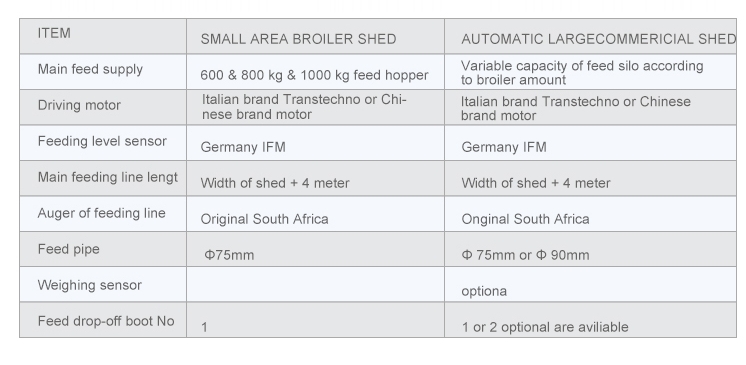Three Phase Exhaust Fan Designs and Applications for Efficient Ventilation Systems
Dec . 01, 2024 13:20 Back to list
Three Phase Exhaust Fan Designs and Applications for Efficient Ventilation Systems
Understanding Three-Phase Exhaust Fans A Comprehensive Guide
Exhaust fans are crucial components in various industries and residential settings, providing ventilation, air quality control, and temperature regulation. Among the different types of exhaust fans available, three-phase exhaust fans are particularly noteworthy due to their impressive performance and efficiency. In this article, we will explore the significance of three-phase exhaust fans, their benefits, applications, and key considerations for users.
What is a Three-Phase Exhaust Fan?
A three-phase exhaust fan is powered by a three-phase electrical supply, which uses three wires to transmit electricity. This configuration allows for a more efficient operation compared to single-phase systems, especially in high-demand applications. Three-phase motors provide a consistent power transfer that results in more reliable performance and durability. This makes them an ideal choice for large-scale operations, such as industrial plants, commercial kitchens, and manufacturing facilities.
Benefits of Three-Phase Exhaust Fans
1. Enhanced Efficiency Three-phase systems are inherently more efficient than their single-phase counterparts. They can deliver more power with less energy consumption. This efficiency translates into lower operational costs, making it a financially viable option for businesses.
2. Higher Torque and Power Three-phase motors generate a constant torque, which results in smoother operation and minimizes wear and tear on the motor. This quality is particularly advantageous in environments requiring continuous operation, such as in factories that rely on exhaust fans for ventilation.
3. Reduced Vibration The balanced load distribution in three-phase motors reduces vibrations compared to single-phase motors. This characteristic not only extends the lifespan of the fan but also decreases noise levels, which is a critical factor in maintaining a comfortable working environment.
4. Better Performance at Higher Loads In applications where high airflow rates are necessary, three-phase exhaust fans excel. They can handle larger volumes of air without compromising on performance, thus making them suitable for industrial processes or large commercial spaces.
5. Simplified Maintenance While maintenance is vital for all mechanical systems, three-phase exhaust fans typically require less frequent servicing due to their robust design and efficient operation. This reliability means that maintenance costs can be lower over the lifespan of the fan.
Applications of Three-Phase Exhaust Fans
Three-phase exhaust fans are utilized across a variety of applications, including
exhaust fan 3 phase

- Industrial Facilities In manufacturing plants, these fans help in removing harmful fumes, dust, and heat, ensuring a safe and productive working environment.
- Commercial Kitchens Restaurants and food processing units utilize three-phase exhaust fans to maintain air quality by effectively removing smoke, steam, and odors.
- HVAC Systems In heating, ventilation, and air conditioning systems, three-phase fans are essential for circulating air, helping to maintain a comfortable indoor climate.
- Mining and Tunnel Operations These fans are crucial in underground operations, providing necessary ventilation to remove toxic gases and maintain air quality.
Key Considerations for Choosing a Three-Phase Exhaust Fan
When selecting a three-phase exhaust fan, there are several important factors to consider
1. Fan Size and Airflow Capacity It is critical to choose a fan that meets the specific airflow requirements of your application. Assessing the size of the space and the volume of air that needs to be moved will guide you in selecting the right fan.
2. Power Supply Availability Ensure that a three-phase power supply is available at your site. If not, the installation of a suitable power system might be necessary.
3. Environment Consider the conditions in which the exhaust fan will operate, including temperature extremes, humidity levels, and the presence of corrosive substances. Selecting a fan constructed with appropriate materials will enhance durability and longevity.
4. Noise Levels If noise reduction is a priority, choose a model designed with sound-dampening features to create a quieter working environment.
Conclusion
Three-phase exhaust fans offer significant advantages in terms of efficiency, performance, and reliability, making them ideal for a wide range of applications. By understanding their benefits and key considerations, users can make informed decisions that not only enhance operational efficiency but also contribute to a safer and more comfortable working environment. Whether in industrial settings or commercial spaces, investing in a quality three-phase exhaust fan is a step toward better air quality and improved workplace conditions.
-
Automatic Feeding Line System-Pan Feeder Nipple Drinker|Anping County Yize Metal Products Co., Ltd.
NewsJul.29,2025
-
Hot Sale 24 & 18 Door Rabbit Cages - Premium Breeding Solutions
NewsJul.25,2025
-
Automatic Feeding Line System Pan Feeder Nipple Drinker - Anping County Yize Metal Products Co., Ltd.
NewsJul.21,2025
-
Automatic Feeding Line System Pan Feeder Nipple Drinker - Anping County Yize Metal Products Co., Ltd.
NewsJul.21,2025
-
Automatic Feeding Line System - Anping Yize | Precision & Nipple
NewsJul.21,2025
-
Automatic Feeding Line System - Anping Yize | Precision & Nipple
NewsJul.21,2025






